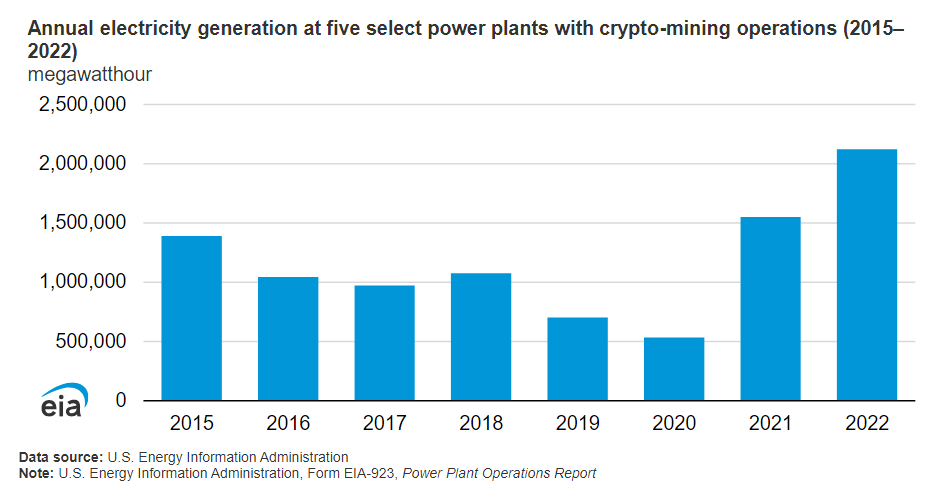Bitcoin Mining Eats Up Only 2% Of US Electricity, Study Finds
A recent report released by the US Energy Information Administration (EIA) has brought to light the substantial electricity consumption associated with Bitcoin mining operations within the country.
The data reveals that these operations are consuming between 0.6% to 2.3% of the nation’s total electricity, a figure equivalent to the annual electricity needs of approximately 3-6 million American homes.
Growth Of Bitcoin Mining In The US
This surge in electricity usage is primarily attributed to the rapid growth of Bitcoin mining in the United States, spurred by two key factors.
Firstly, the Chinese government’s crackdown on cryptocurrency mining in 2021 prompted many operations to relocate to the US, where more favorable regulatory environments were sought.
Secondly, several major Bitcoin mining companies have gone public in recent years, establishing facilities in energy-rich states such as Texas and New York.
Despite the industry’s claims of economic benefits and job creation, the escalating electricity consumption has raised concerns among policymakers and grid planners.
Bitcoin currently trading at $43,082 on the daily chart: TradingView.com
While the report acknowledges these apprehensions, it also presents the industry’s perspective. Proponents of Bitcoin mining argue that their operations are comparatively “clean” and energy-efficient when compared to other industrial activities.
They emphasize the use of renewable energy sources by many miners and point to the upcoming Bitcoin halving event, which might incentivize even more efficient mining practices.

Despite these arguments, experts remain divided on the sustainability claims of the industry. The energy-intensive nature of Bitcoin’s proof-of-work consensus mechanism continues to be a point of contention, with the true environmental impact still subject to ongoing debate.
Additionally, the potential impact of the halving on energy consumption necessitates further monitoring and analysis.
In essence, the recent study revealing that Bitcoin mining accounts for 2% of U.S. electricity consumption suggests that concerns about its environmental impact may be overblown.
While not insignificant, this fraction appears relatively modest in the broader context of the nation’s diverse energy portfolio. Nevertheless, ongoing scrutiny and a nuanced approach are essential as the cryptocurrency industry navigates the delicate balance between technological innovation and environmental responsibility.
Moving forward, a balanced and data-driven approach is essential to navigate this complex issue and ensure the responsible development of the cryptocurrency ecosystem.
Featured image from Adobe Stock, chart from TradingView



